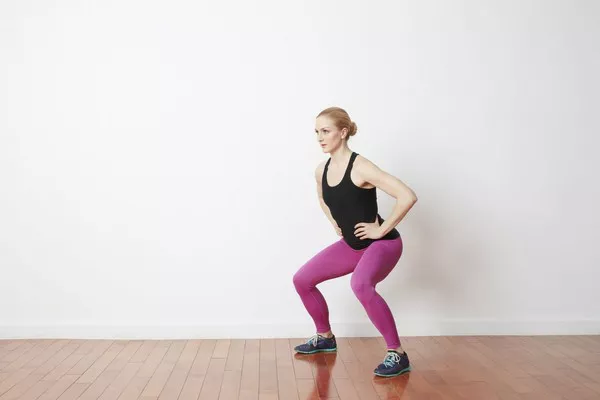Cardiovascular training, commonly referred to as cardio, encompasses various forms of exercise aimed at improving heart health, endurance, and overall fitness. This type of training is crucial not only for athletes but also for individuals looking to maintain a healthy lifestyle. Understanding the 4 types of cardiovascular training can help you choose the right exercises to integrate into your fitness regimen, ensuring a well-rounded approach to health and fitness.
Cardiovascular Training
Cardiovascular training is essential for maintaining a healthy heart and vascular system. It involves any activity that increases the heart rate and respiration while using large muscle groups repetitively and rhythmically. The benefits of regular cardiovascular exercise are well-documented and include improved heart health, increased metabolism, decreased incidence of diabetes, improved mood, and better management of weight.
However, not all cardio exercises are the same; they can be categorized into four main types: Low-Intensity Steady State (LISS), High-Intensity Interval Training (HIIT), Moderate-Intensity Continuous Training (MICT), and Circuit Training. Each type offers unique benefits and can be suited to different fitness levels, goals, and schedules.
Low-Intensity Steady State (LISS)
Definition and Characteristics
Low-Intensity Steady State (LISS) cardio involves prolonged, continuous effort at a low to moderate intensity. Typically, LISS exercises are performed for extended periods, usually 30 minutes to an hour, at approximately 50-65% of maximum heart rate. This type of cardio is highly accessible and can include activities like brisk walking, cycling, swimming, or using an elliptical machine.
Benefits
LISS is particularly effective for beginners or those with health conditions that preclude high-intensity workouts. It’s also beneficial for recovery days as it doesn’t overly strain the cardiovascular system. Key benefits include improved cardiovascular endurance, better fat utilization as a fuel source, reduced stress levels, and enhanced recovery.
Limitations
While effective and inclusive, LISS may not be the best option for those looking to improve athletic performance or significantly increase cardiovascular capacity. It also requires more time, which can be a limitation for individuals with busy schedules.
High-Intensity Interval Training (HIIT)
Definition and Characteristics
High-Intensity Interval Training (HIIT) consists of short bursts of intense exercise alternated with low-intensity recovery periods. Typically, a HIIT workout lasts about 10-30 minutes and involves performing exercises at 80-95% of maximum heart rate during the high-intensity phase. Examples include sprinting, interval biking, jump rope, or specialized HIIT classes.
Benefits
HIIT is highly efficient; studies have shown significant cardiovascular and metabolic benefits can be achieved in shorter durations compared to LISS. It’s effective for improving athletic performance, increasing metabolic rate, and reducing body fat. Additionally, HIIT can lead to Excess Post-exercise Oxygen Consumption (EPOC), which means your body continues to burn calories even after the exercise session has ended.
Limitations
HIIT is demanding and may not be suitable for everyone, especially those new to exercise or with certain health conditions. It also has a higher risk of injury due to the intensity of the workouts and requires proper technique and pre-existing fitness to be performed safely.
Moderate-Intensity Continuous Training (MICT)
Definition and Characteristics
Moderate-Intensity Continuous Training (MICT) is performed at a steady, moderate intensity for continuous periods, typically between 20 to 60 minutes. This type of cardio is performed at about 65-75% of maximum heart rate. Common MICT activities include jogging, moderate cycling, aerobic dancing, and swimming.
Benefits
MICT strikes a balance between LISS and HIIT and is suitable for a broad audience. It improves general cardiovascular health, aids in weight management, and can be easily adapted to various fitness levels. MICT also enhances mood through the release of endorphins and can be more enjoyable for those who find high-intensity workouts too challenging.
Limitations
The primary limitation of MICT is that it may become monotonous over time, potentially leading to a plateau in fitness improvements. Additionally, while it is less time-consuming than LISS, it doesn’t offer the same efficiency as HIIT.
Circuit Training
Definition and Characteristics
Circuit training is a form of body conditioning or resistance training which is incredibly efficient at blending strength training and cardiovascular fitness. It involves a series of exercises performed one after the other, with minimal rest in between. Each circuit typically includes exercises that target different body parts, providing a full-body workout.
Benefits
Circuit training is excellent for improving cardiovascular health, strength, and flexibility. It also maximizes calorie burn within a shorter duration, making it an efficient workout choice. This type of training is highly adaptable, with exercises that can be scaled according to fitness levels and goals.
Limitations
Due to its fast-paced and complex nature, circuit training may not be suitable for beginners who are unfamiliar with exercise techniques. It requires some knowledge of exercise form to prevent injury, and its intense nature might be daunting for some.
Conclusion
Incorporating various types of cardiovascular training into your routine can provide comprehensive health benefits and prevent the monotony often associated with a single form of exercise. Whether you choose LISS, HIIT, MICT, or circuit training, each has unique advantages that can be tailored to fit your health and fitness goals. Understanding these differences and applying them to your routine can help maximize your workouts and lead to better health and a more active lifestyle.
[inline_related_posts title=”You Might Be Interested In” title_align=”left” style=”list” number=”6″ align=”none” ids=”8336,8332,8329″ by=”categories” orderby=”rand” order=”DESC” hide_thumb=”no” thumb_right=”no” views=”no” date=”yes” grid_columns=”2″ post_type=”” tax=””]
































